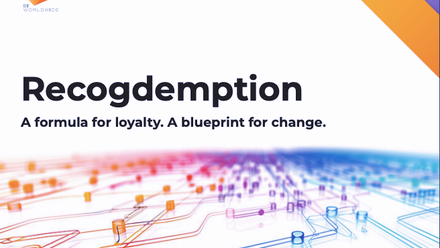6 ways to deliver benefits your employees will love

But what about the employee experience? The world is changing and so is the world of work. Employers need to stay current with strategies for retaining, recruiting and attracting the best and the brightest people. We believe it’s time employers evolved the way they deliver their benefits offering.
We see three issues driving the need to evolve benefits delivery now:
1) A changing workplace
We need to continuously adapt to the changing elements in the workplace, such as diversity, flexible working, flexible retirement and the transfer of responsibility to the individual - both from the State and employers (pensions moving from defined benefit to defined contribution) which puts more onus on the individual to make financial decisions.
2) Increased housing costs, unsecured debt and continued economic uncertainty
Making financial decisions is stressful, and employees may find it hard to navigate in and among the increasing costs of living, confusion stemming from low financial literacy, continued political instability and the diminishing affordability of retirement. For many employees, managing month-to-month is the priority.
3) Changing technology
Individuals expect information on-demand, at any time and at their fingertips. They also expect relevant and personalised information to be pushed out to them when they need it.
Why Bother?
With these issues in mind, we share our six ways to evolve how benefits are provided in your workplace. This can reduce your hard costs but also reduce absence through financial stress (which is estimated to cost firms 4%1), reduce turnover costs (estimated to be £30,000 per employee2) and improve engagement.
1) Make it convenient
Clunky user un-friendly intranet sites; PDF forms that need to be printed, hand-filled and scanned, confusing internal approval processes and multiple points of contact to ask for help – all make engaging with benefits difficult and frustrating. Employees place a high value on convenience, and so should employers, to minimise unnecessary time spent trying to work it all out.
- Move to mobile: Allow your people to manage their benefits on-demand on their preferred devices.
- Create connectivity: Your benefits should all be connected and available through a single sign-on platform We also recommend providing a digital filing cabinet so employees can access all their key benefits documents in one place.
- Select services and service providers that prioritise convenience: Competitive advantage today is more and more becoming defined by good service design and excellent customer experience. Make this one of your key criteria when selecting your service providers.
2) Personalisation
Employees should feel that every message they receive regarding their benefits is personalised and relates directly to them. The latest benefits platforms send personalised messages and nudges, which can completely change how benefits are communicated to your employees.
3) Data
As an employer, you hold useful data that when analysed can not only provide insight into your employees’ needs but also help you get the best ROI from your benefits spend. You have the ability to see where you should and shouldn’t be investing.
4) Focus on wellness
Provide the benefits your employees want and value. The future of employee benefits is about supporting your employees to achieve well-being in a holistic way. By focusing benefits on achieving their wellbeing (as opposed to a generic list of benefits that draw no clear outcome) you are showing your employees that you care about them they’ll notice, which in turn, creates greater loyalty.
5) Make it fun
Using aspects of gamification and competition helps encourage participation, builds culture and fosters deeper engagement. Digital platforms and clever internal communications strategies will help you deliver this.
6) Remember it’s all about the employee
Focusing more on employees needs and less on business needs will lead to more engaged employees. If employees need help managing their financial affairs, you should be providing them with access to financial guidance and advice where appropriate.
Mark Rowlands is head of DC and financial wellness services at Mercer.

This article was supplied by Mercer.
Supplied by REBA Associate Member, Mercer
At Mercer, we believe in building brighter futures.







